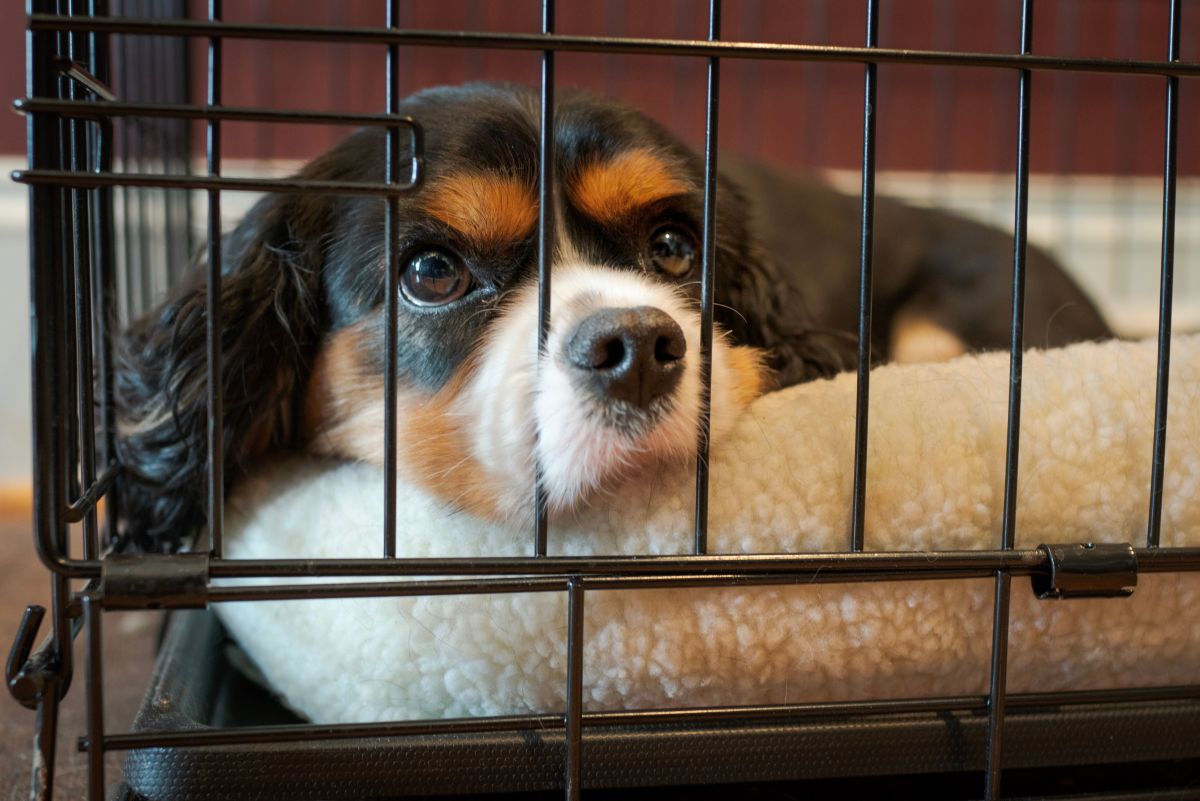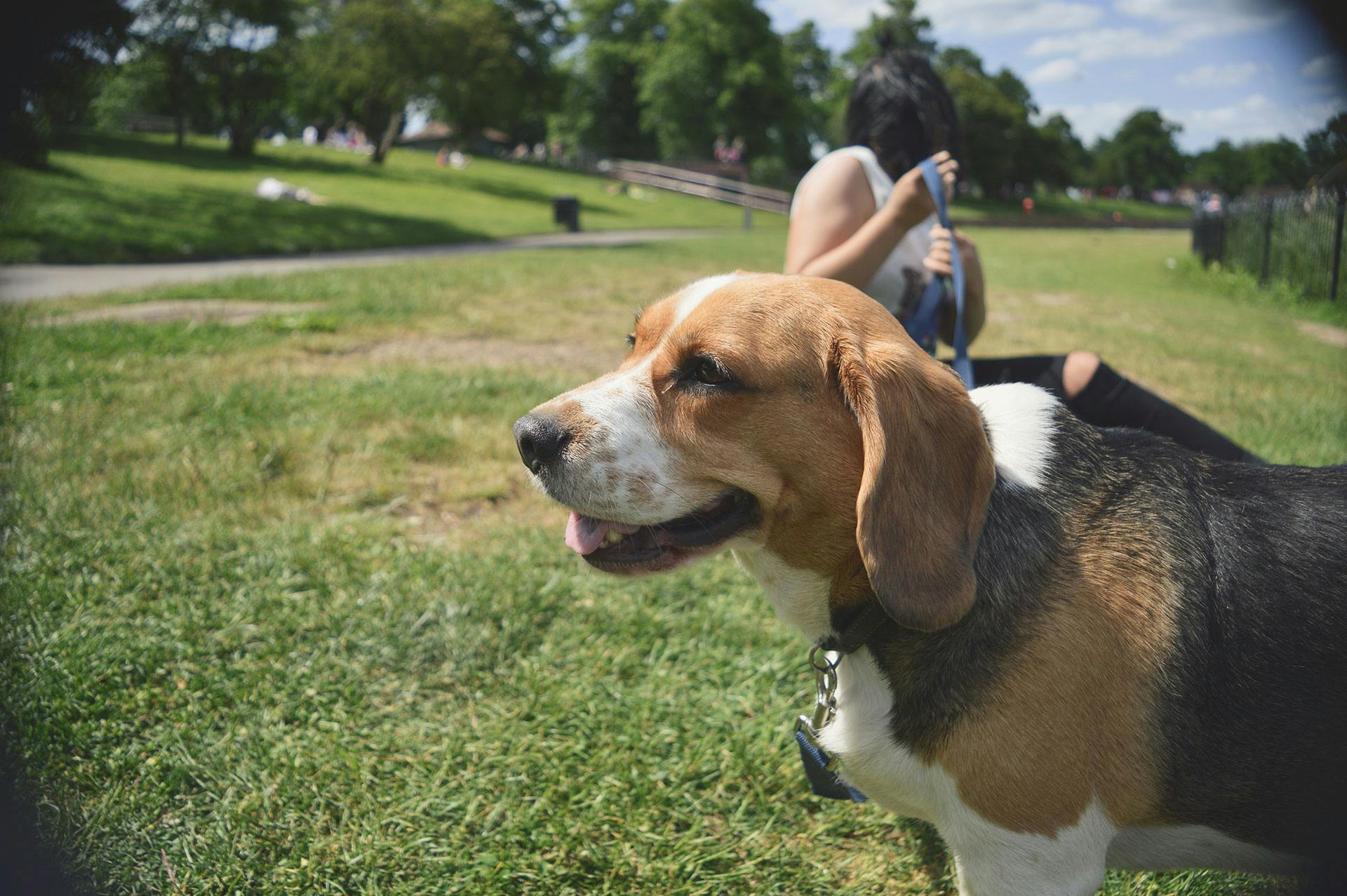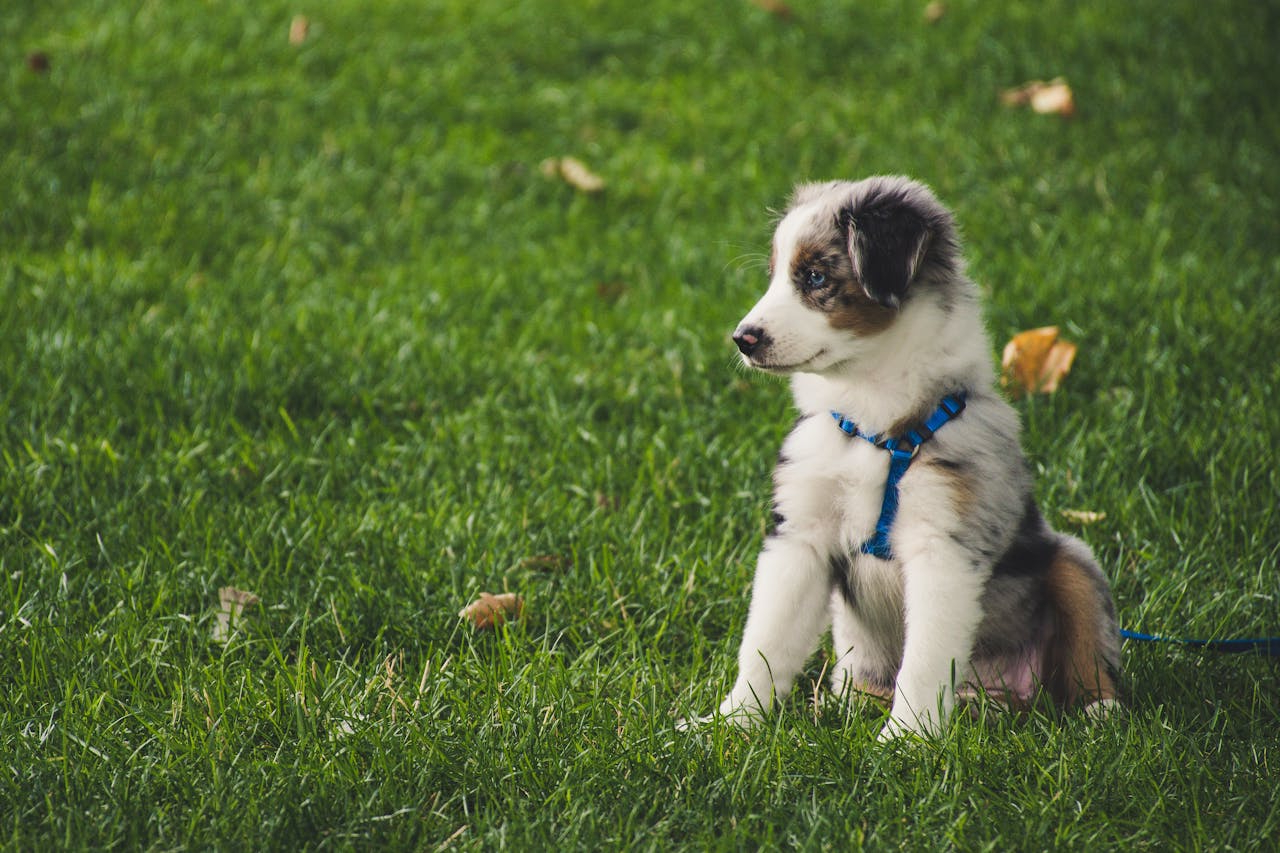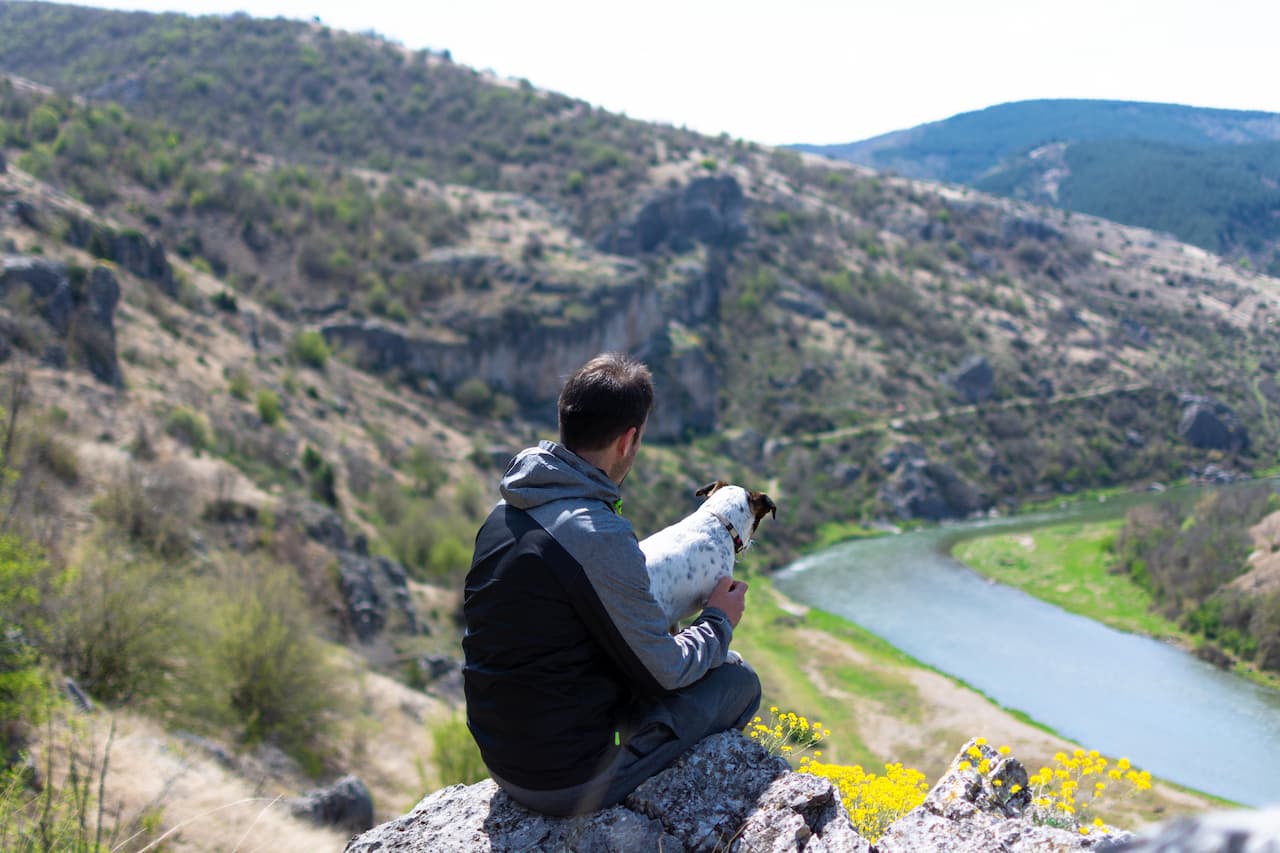The ABCs Making a Crate His Den
A dog properly introduced to his crate will view it as a safe haven or den, then he seek it out when he wants a cozy place to rest. In our practical experience, crate training, when done correctly, provides owners with peace of mind during those times when the owner cannot monitor the activities of their puppy or new dog.
While many crate training articles focus on crates as a training tool for housebreaking, this article focuses on how to positively introduce your dog to his crate. In short order, he will happily return to it whenever you ask him to kennel up.

Proper Puppy Crate Training Utilizes Your Dog’s Basic Instincts
Dogs are originally den animals by nature. They instinctively enjoy being in dark close quarters. In the wild, expectant mothers dig dens in order to whelp and raise their new puppies. In fact, I have a border collie girls that regularly digs dens or re-excavates old dens in accordance with their seasons to prepare for coming or imaginary litters.
These dens are relatively spacious and will protect the puppies from the elements such as summer heat, winter snow, and rain. Dens maintains a relatively constant temperature, as it is typically one foot underground. In the wild puppies stay in dens until they begin to walk. Eventually venturing out short distances from the den, returning to the den to sleep and nurse. With a proper introduction to his new crate, your dog’s natural instincts will cause him or her to seek out his crate for nap time or safe haven.
Select the Proper Crate For Training
There are 3 basic types of crates on the market:
- The soft-sided crate
- The plastic (or metal) hard-sided crate
- The wire mesh crate
The Soft Sided Crate
Save the soft-sided crate for later, at a time when the dog is properly crate trained and has learned to seek comfort in his crate. Soft crates are easily destroyed, causing unnecessary expense to the owner and teaching the dog that if they try hard enough, they will eventually be able to set themselves free. The soft crate is only appropriate for dogs who are already crate trained and comfortable in their private den area. However, once the sanctity of the crate has been established, they are great for travel and indoor containment, as they offer den-like privacy via their mesh windows and adjustable fabric flaps.
The Plastic (or Metal) Hard Sided Crate
The plastic or sheet metal-sided crates are an excellent option for an adult dog. They offer den-like privacy and are the only crates rated for air travel. On the downside, plastic crates are not easy to disassemble and reassemble, which is not a problem with small dog crates but becomes an issue when moving large dog crates within the home or on a trip from the car to a hotel room.
Additionally, they cannot be safely reconfigured to accommodate growing puppies. Worse yet, they are very difficult to clean when puppy has had an accident in them.
Wire Mesh Crates
The collapsible wire mesh crate with a movable divider, is the preferred training crate for growing dogs. You will want to purchase a crate that will accommodate your puppy when fully grown. A divider is necessary to limit his sleeping area, and easily adjust the space as he grows.
Fit the sleeping space to allow for comfortable rest, so that he can stretch out, with his food and water bowl. However, it should not be so large that it provides him with enough space for him to stake out two areas: one for sleeping and another one for eliminating. A puppy that gets into the habit of soiling his crate will be very difficult to housebreak. The privacy-den effect can be added to the wire crate by draping the crate with a sheet or towel.

Best Value Crates
For wire crates for crate training, we recommend the Petmate line of wire folding crates. This line comes with a divider that is easily shifted as your puppy grows. Additionally it has a sturdy crate pan with smoothed, rounded edges. The last crate we bought, a MidWest iCrate, was the first to have its pan crack. Sadly, replacement crate pans cost as much as the actual crate. The Petmate pans are also antimicrobial, which you will appreciate in your home.
Commands for Crate Training a Puppy: Kennel Up!
On day one, it’s a good idea to start by teaching your dog to enter his crate on command. You can begin by saying, “kennel up,” “go to your crate,” “get in” or any phrase of your choosing. Then toss a treat into the crate. Your dog will quickly find going into the crate is a rewarding exercise! Initially, leave the crate door open to let him come and go as he pleases. Repeat the training session several times during the first few days with four to five “kennel ups” or “go-ins” per session.
Clicker Training for Puppy Crate Training
If you plan on using clicker training, click the clicker when the dog enters the crate to retrieve his reward. Once he begins to enter the crate on command, switch to treating him after he has entered the crate on his own. As his understanding of the command solidifies, you can begin to reward him intermittently—sometimes he receives a treat, other times no treat and on the rare occasion he gets the “jackpot,” four or five small treats.
Feed His Meals in the Crate
Give the command to “kennel up,” and place the food bowl in the crate. Once he has entered the crate, you may shut the crate door. When the dog or puppy has finished their meal say “Good kennel up” and open the door. For young puppies, you will want to take them out for a potty break within 15 to 20 minutes after the puppy has finished his meal. If you have multiple dogs, crate feeding is a good way to prevent rapid eaters from stealing from the slower eaters.
Crate Train Your Dog for Bedtime
If possible, we recommend bringing the crate to your bedroom for bedtime to keep an eye on him. This provides some extra comfort in his new surroundings. As the dog becomes more comfortable in his crate, you may choose to crate him in the evenings in another area of the house. Include a chew toy in the crate to entertain him until he exhausts; we recommend selecting one without a squeaker.
Be prepared, you may have a night or two of your dog or puppy “crying” himself to sleep. Be careful not to let the dog out of his crate while he is barking or misbehaving. Only let him out when he is behaving himself—unless you suspect he is about to have a potty accident.
You can recognize a puppy or dog that is in need of a potty break, when you see him turning in circles and looking at the bottom of the crate. In that instance carry him out for a potty (literally if this is a young puppy). Praise him for the good potty. Give him a short walk as a reward, and then return him to the crate for the evening.
Remember to give him a small reward for kenneling up at bedtime as well. In the morning, be careful to get your dog to his potty area immediately after leaving his kennel. With young puppies, carry them outside to avoid unintended accidents on the way to the door.
Avoid Using the Crate as Punishment
While you are introducing your puppy or dog to his new crate, avoid using the crate as a form of punishment. You are trying to engender positive feelings towards the crate, so if at any point during your training sessions you find yourself beginning to get frustrated, stop and switch to a new activity. Dogs will pick up on your emotions. Your frustration will likely cause your dog or puppy to mistrust or fear the crate.
Crate Duration Times for Puppies and Young Dogs
While sleeping in the evenings, the dog’s digestive system slows down considerably, allowing him to remain crated for an 8-hour stretch. During the daytime, dogs should be crated a maximum of 4 to 5 hours at a time. It is important that during their crate time they have access to water. A stainless steel pail hooked to the side of the crate or crate door works best.
Young puppies require more frequent potty breaks than adults. Puppy ages and their relative maximum crating times are:
- 8–10 weeks: 30–60 minutes
- 11–14 weeks: 1–3 hours
- 15–16 weeks: 3–4 hours
- 17+ weeks: 4–5 hours
Before leaving for work and penning or crating your puppy or dog, be sure to give him at least 30 to 60 minutes of exercise depending on his size and age. Make sure to release him as soon as you return. Your arrival will trigger excitement and speed up his digestive system.
Sean the Sheepman Explains Why Kate Needs and Loves her Crate
Final Thoughts on Crate Training a Puppy
When you are home and enjoying time with your new puppy or dog, leave the door to the crate open, and you will soon find that he looks forward to relaxing in his own private area.
If you are planning on a task that you expect your dog to find unpleasant, such as a bath, close the door to the crate before he realizes your intentions, so that he cannot hide in it. You want to avoid turning his safe haven into a battleground by trying to drag him out of his den.




